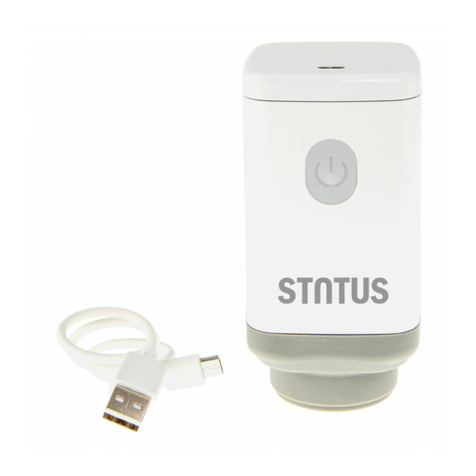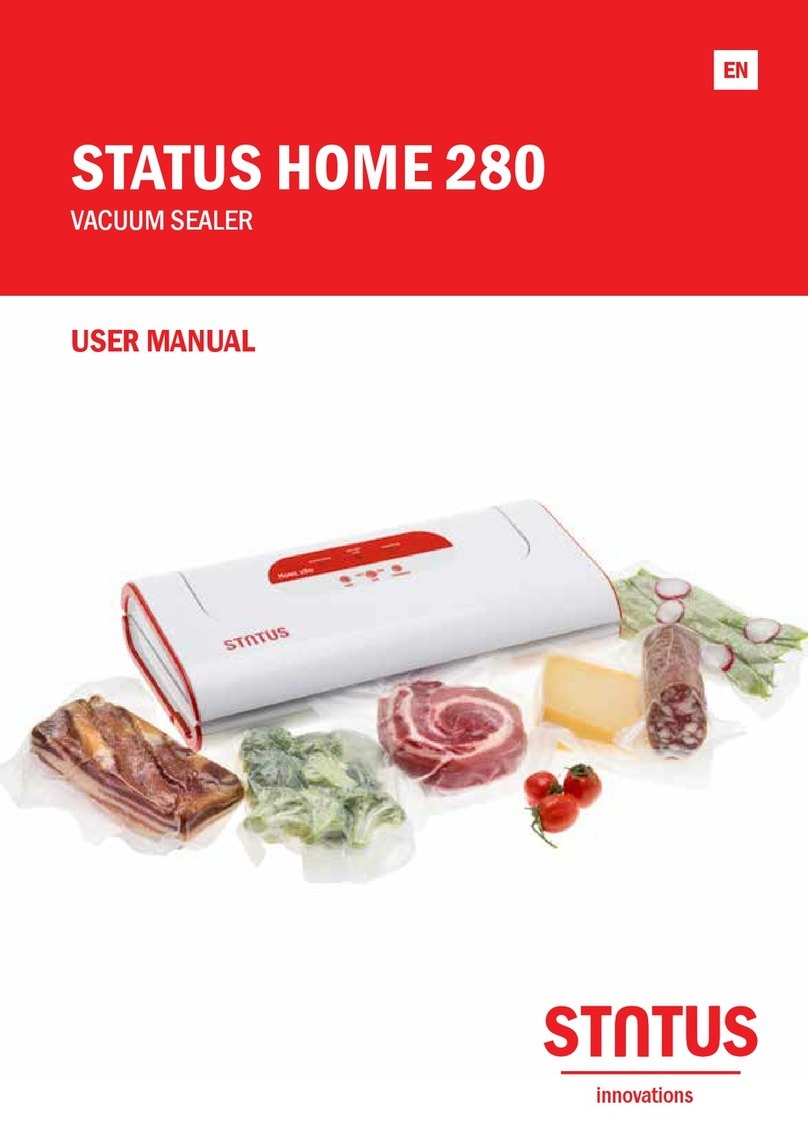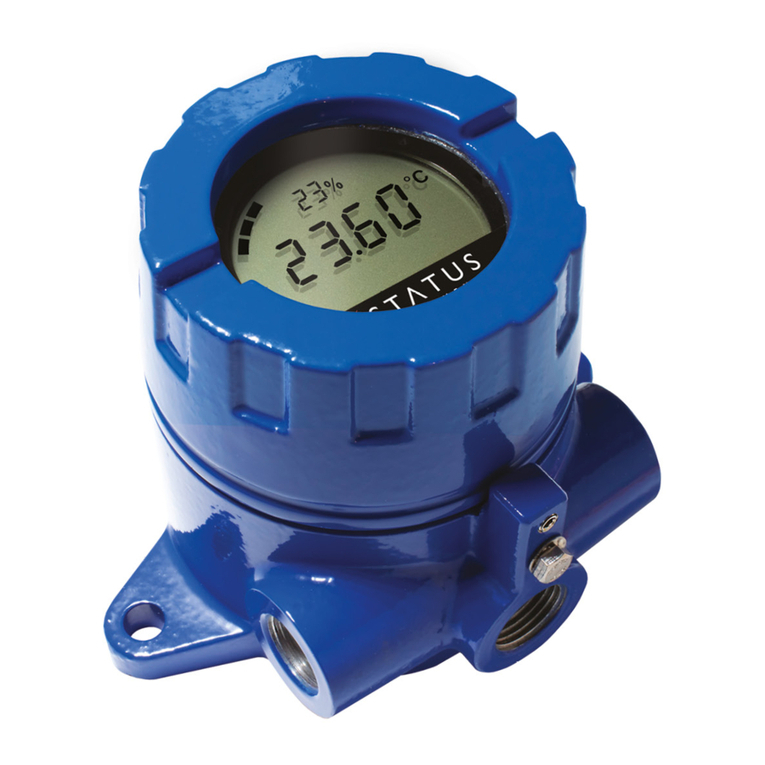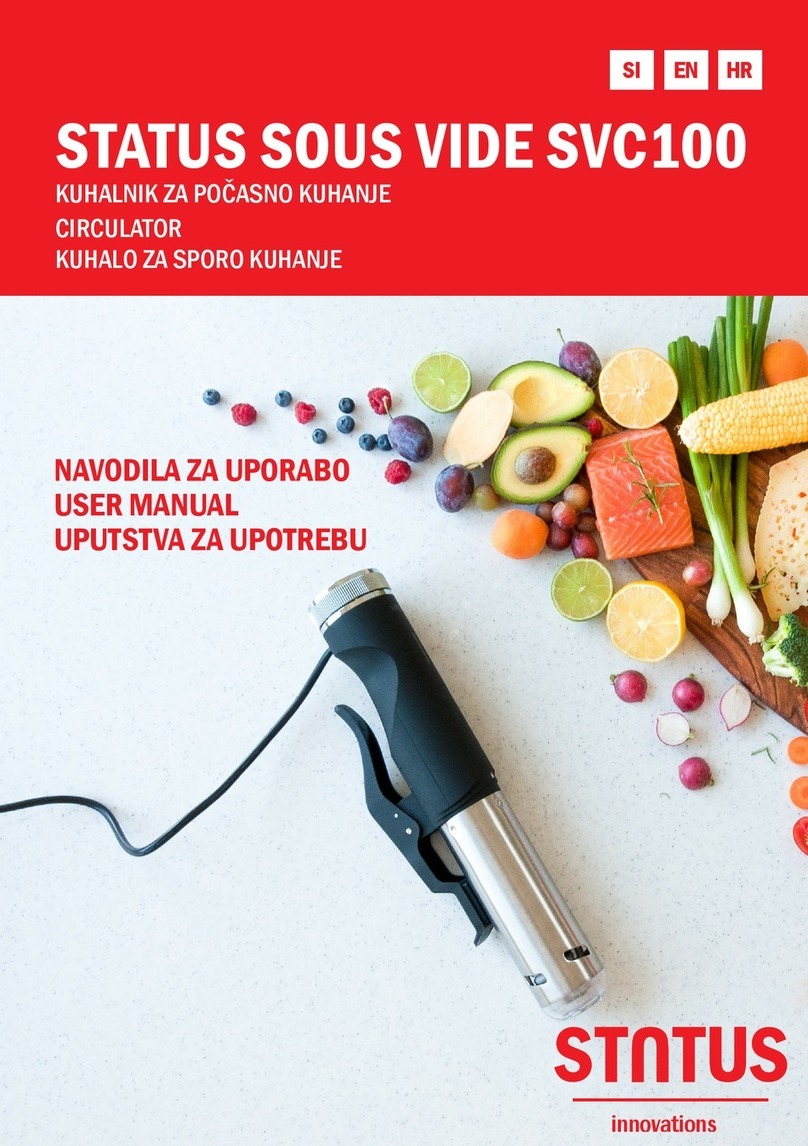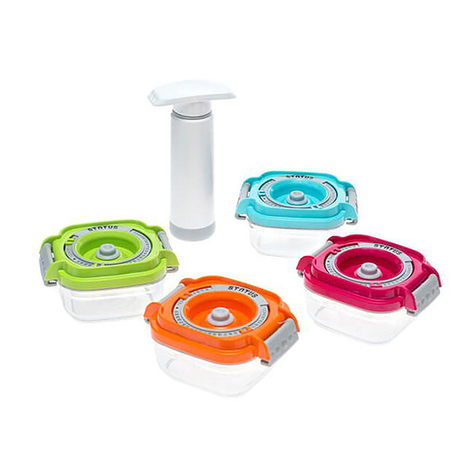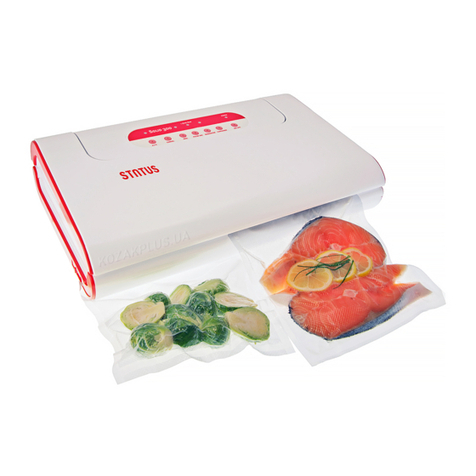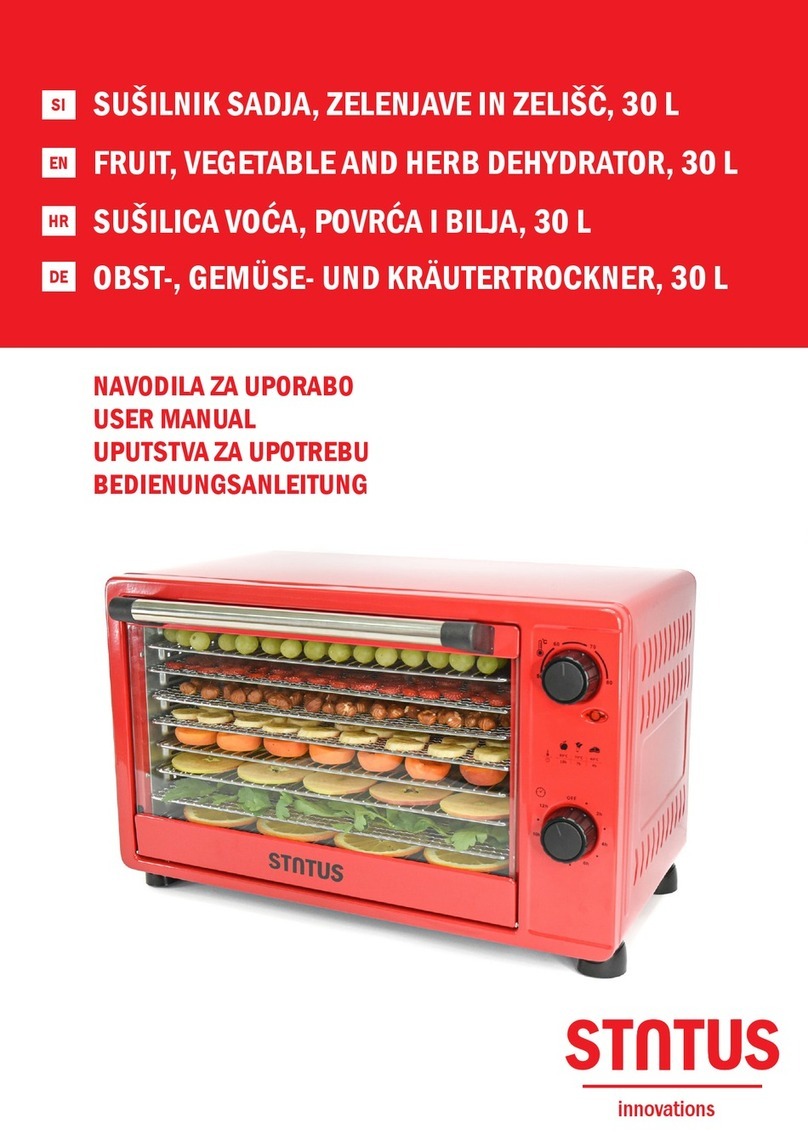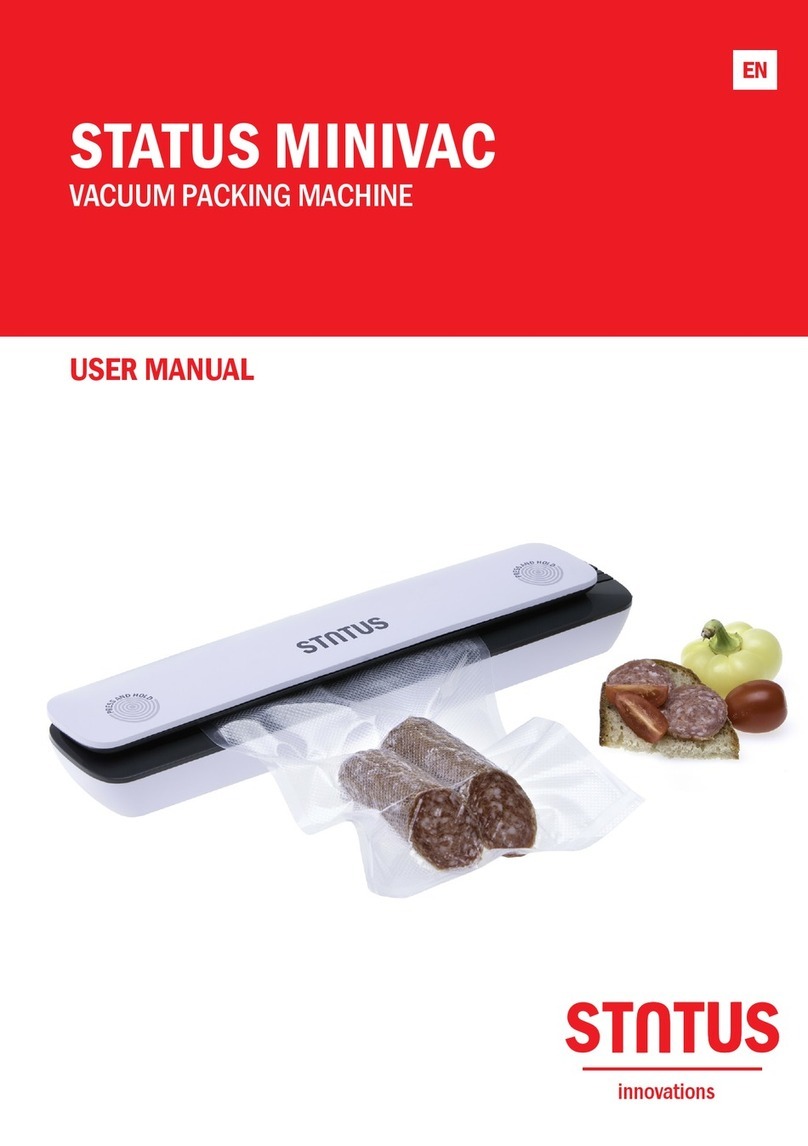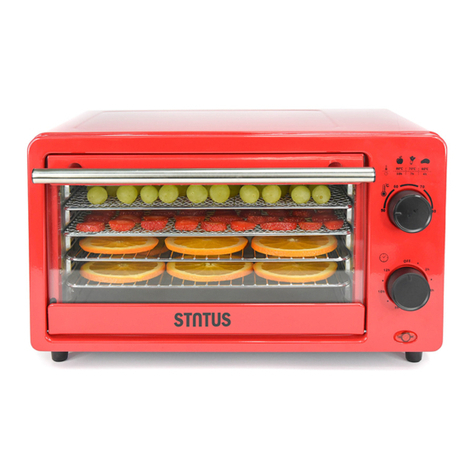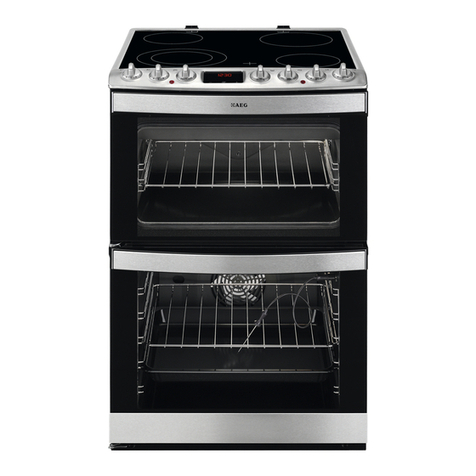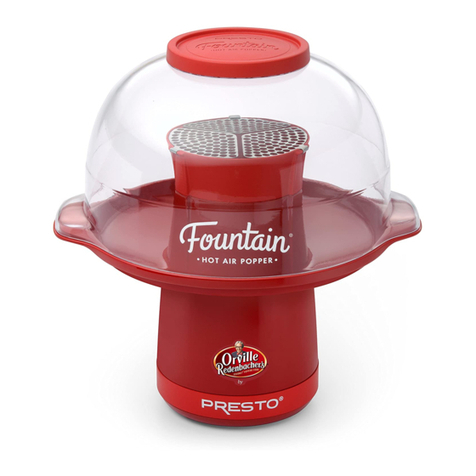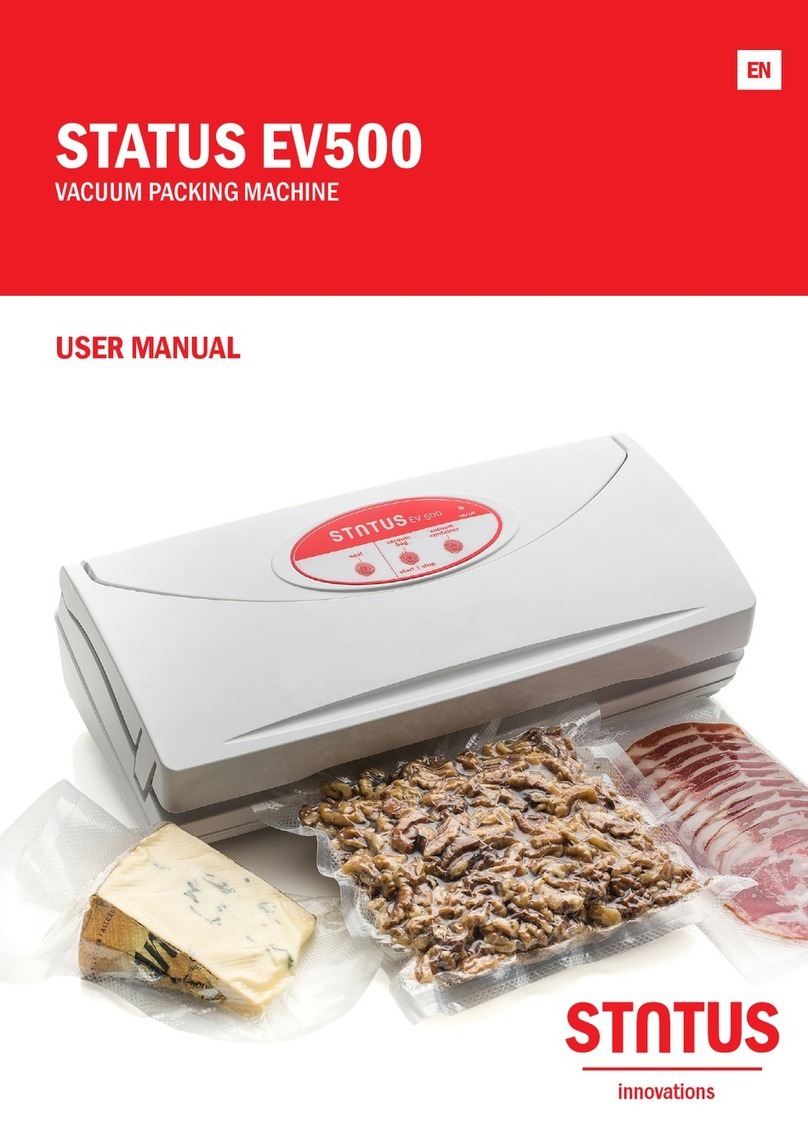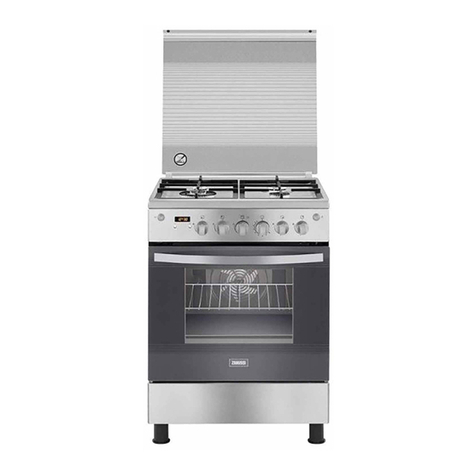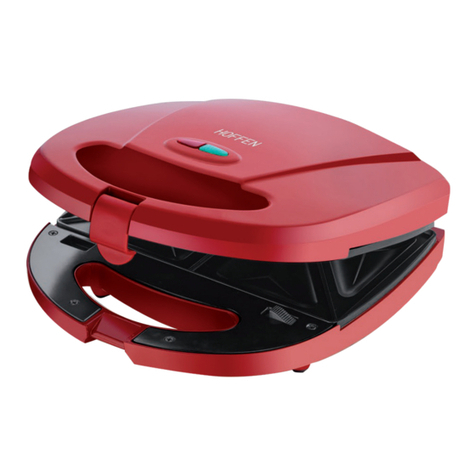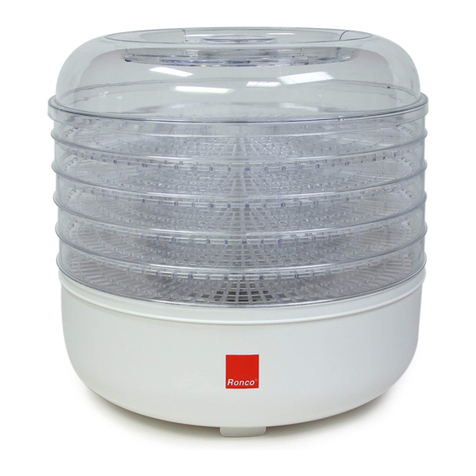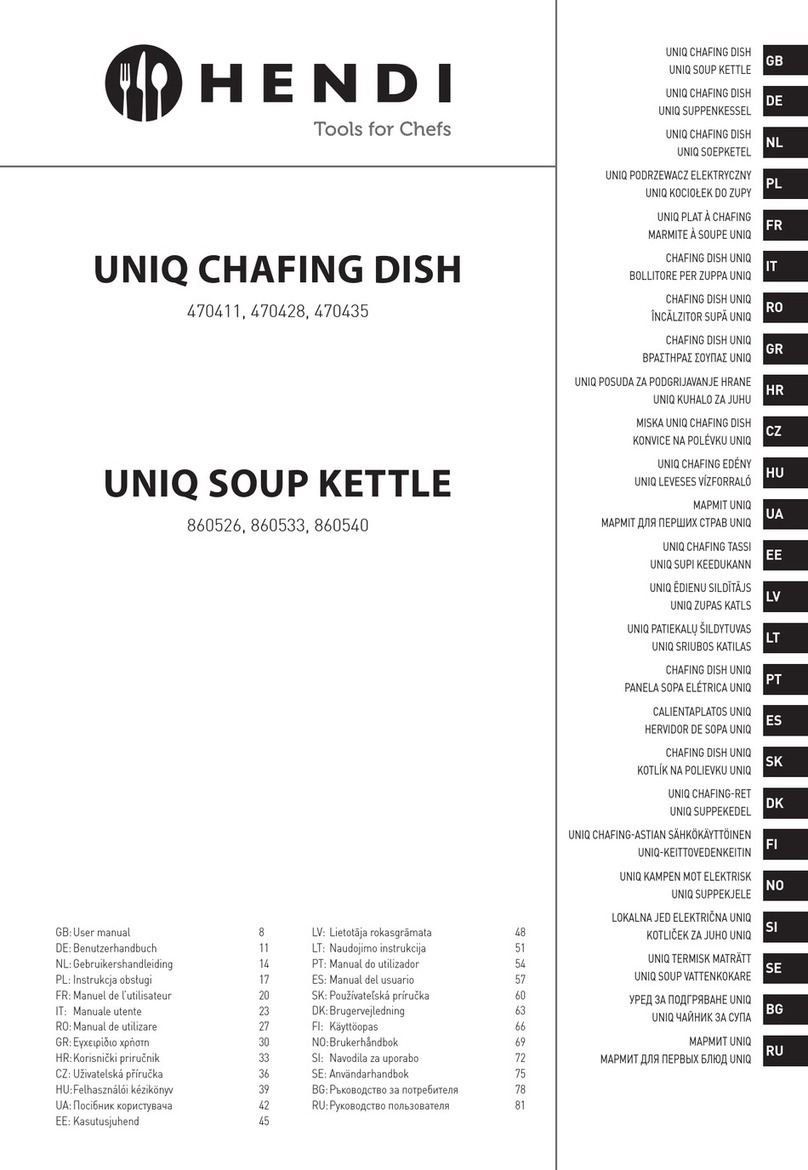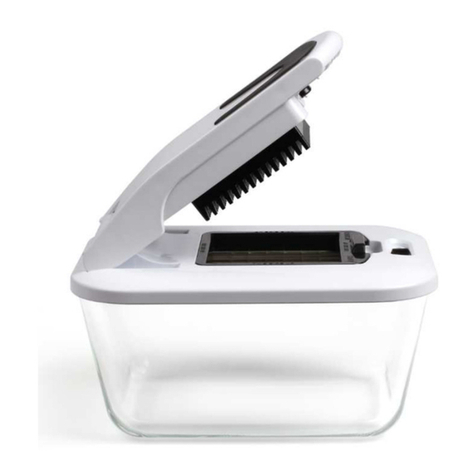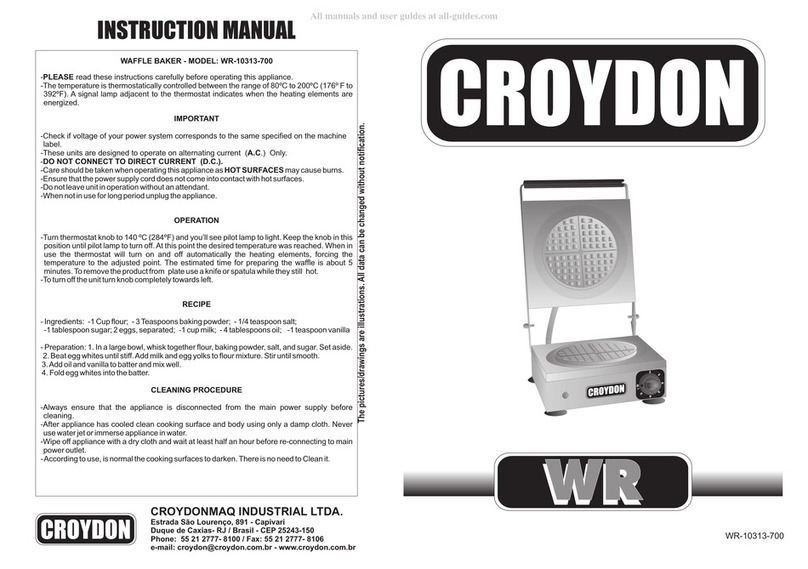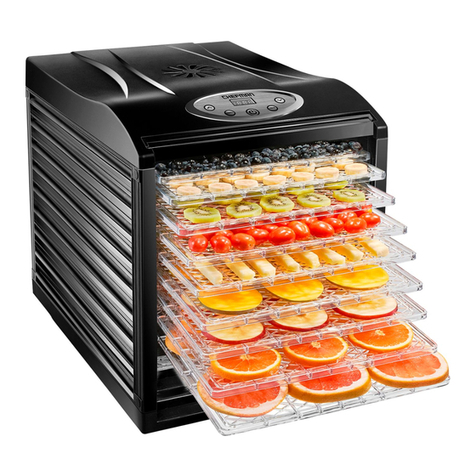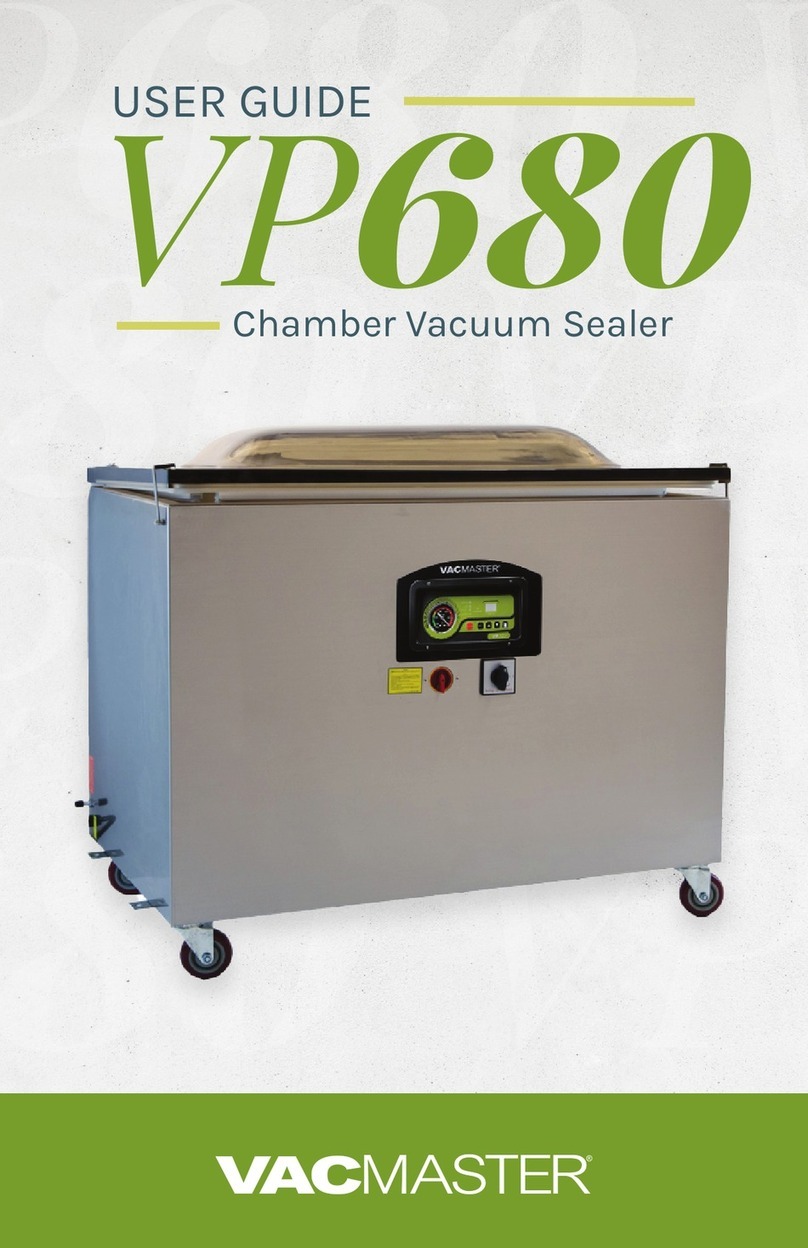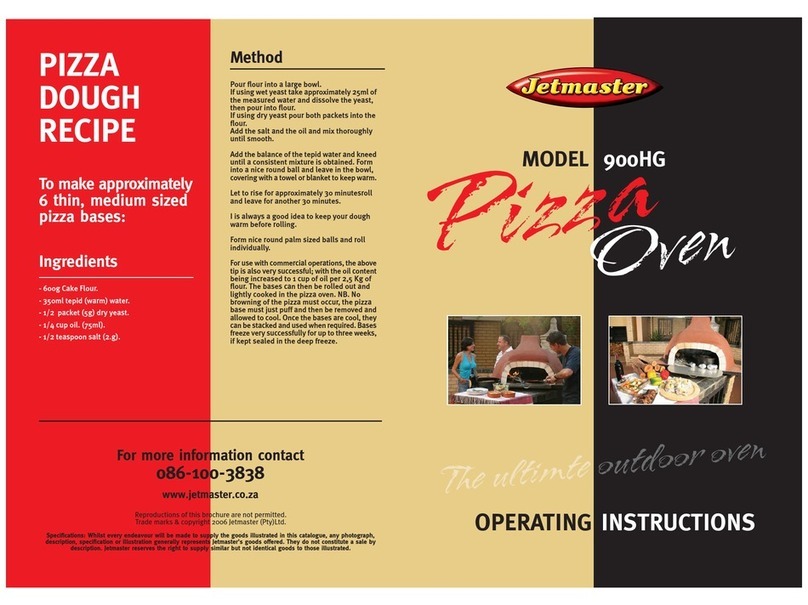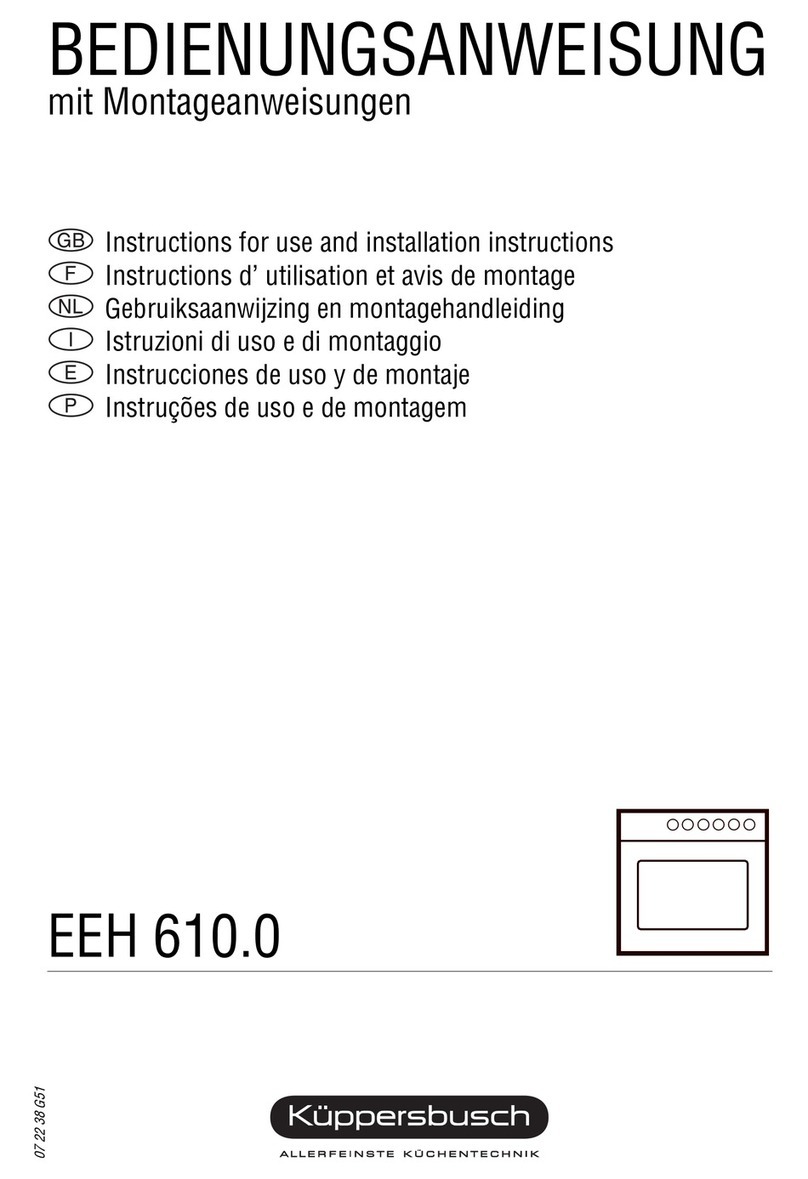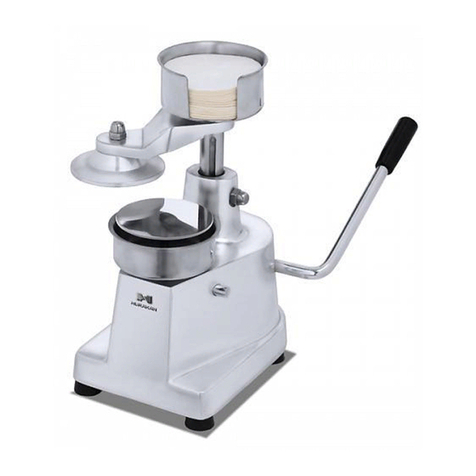
10
• When you assess that enough air has been removed
(pay attention to what is happening with the food,
if liquid is starting to slip toward the machine or if
further removing of air could damage soft foods),
press the Stop button (Item 2 in Figure 1). The pump
is stopped and sealing is activated.
You can always stop the vacuum packing process by pres-
sing the Stop button (if you, for example, determine that
the food contains more liquid than you had assessed).
TIP: The easiest way to vacuum pack the majority of
fruits and vegetables, fresh meat and mushrooms is to
put it into the freezer for 1-2 hours. This way fruit (e.g.
strawberries) will keep its form and you will avoid the
danger of liquid entering the Vacuum Channel during
vacuum packing.
2.2.5. VACUUM PACKING USING
VACUUM CONTAINERS AND LIDS
The STATUS SV2000 also includes an Accessory
Hose and Port which can be used for vacuum
packing of Status’ vacuum containers and lids.
a.) Insert the opening of the Accessory Hose into the
Accessory Port (Figure 8) on the right side the
Vacuum Channel.
b.) Attach the Accessory Hose and Port to the valve
of the chosen vacuum container.
Figure 8: Vacuum packing using containers.
c.) Press Vacuum Packing of Container button
(Item
3 in Figure 1)
to vacuum the container. When the
correct negative pressure is reached, the pro-
cess stops automatically.
When vacuum packing liquid foods (soups, sauces,
etc) there should be at least 1.5 cm between the
surface of the liquid and the lid.
button only while the machine is vacuum packing (the
button no longer works when the machine is sealing).
If you haven’t stopped the process of vacuum packing
in time and liquid had entered the Vacuum Channel,
the machine will stop automatically. The Liquid block
indicator will be lit.
To open the lid, press on the middle of the red handle
with your thumb and lift it with your forenger (Figure
3). There is a container between the seals that you lift
straight up. Drain the liquid and carefully wipe up the
whole container. Set the container back to its place and
carry on with vacuum packing. If the liquid entered the
channel with the container, wipe up and dry the chan-
nel as well.
Figure 7: When liquid collects in the container, lift
it straight up, drain the liquid and carefully wipe up
the container.
2.2.4. VACUUM PACKING
OF FOODS WHICH ARE
EASILY CRUSHED
When vacuum packing foods which are easily crushed
or contain a lot of water (fresh fruit, salads, mushrooms,
bread, pastry) less vacuum should be used (from 0 to
-300 mbar).
With manual vacuum packing you can interrupt the pro-
cess of removing air as soon as you assess that enough
air has been sucked out of the bag or that further remo-
val of air could damage foods which are easily crushed.
The process of manual vacuum packing is very similar
to the above described automatic vacuum packing only
with two main differences. Keep in mind that with soft
and moist foods you have to pay extra attention to what
is happening in the bag during vacuum packing.
• Always place the bag so that you set the edge of the
bag between the gaskets in the Vacuum Channel
(Item 9 in Figure 1).
